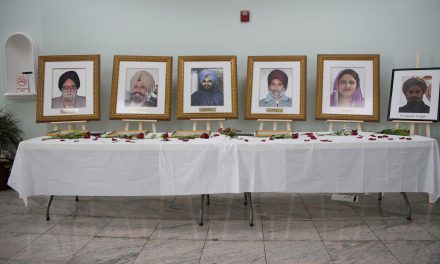
The 2020 election is going to be an unprecedented one, as an unparalleled number of voters cast their votes by mail due to the pandemic, creating a unique process and more time needed to finalize the results and to ensure that our democracy has worked properly, and that each vote is counted.
Different states have different rules governing how and when absentee ballots can be counted. In Wisconsin, county clerks cannot start counting votes until 7:00 a.m. on Election Day, and ballots that are postmarked and received by November 3 will still be valid.
Due to this unique set of circumstances, the Wisconsin Election Commission and municipal clerks do not expect to have final election results by 10:00 p.m. on Election Day, and THAT’S ALRIGHT.
The most important thing to remember is DON’T PANIC – in a democracy, it is imperative that each and every vote is counted – even if the process takes longer than usual to do so. We can’t accept anything less than that, so we should welcome the wait, not fret over it.
The more drawn-out process is also a testament to the reliability and legitimacy of mail-in voting. Election officials work to triple check that each and every ballot they receive by the legal deadlines is counted accurately.
Security and accuracy measures include witness signatures, secure drop boxes, independent bar codes, paper records completed and reviewed by municipal clerks and others trained on ballot counting and curing, and such. These are then triple checked by county and state officials.
How Votes Will Be Counted in the 2020 Election
Wisconsin election officials will be working overtime on Election Night to deliver complete and accurate election results to to the public and the news media, according to the Wisconsin Elections Commission.
“Due to the pandemic and the high number of absentee ballots, it will likely be Wednesday before all the unofficial results are in,” said Meagan Wolfe, Wisconsin’s chief election official. “It doesn’t mean something went wrong – it means election officials are doing their jobs and making sure every legitimate ballot gets counted.”
“It is important for voters and the media to understand how votes are counted in Wisconsin,” Wolfe said. “When people make assumptions about vote counting based on what happens in other states or rumors, it can lead to misinformation.”
Here are important things to know about what happens after voting ends on Election Day as Wisconsin’s ballots are counted and triple-checked before the results become official.
Counting and Reporting Unofficial Results on Election Night
Wisconsin has never had a statewide system for reporting unofficial results on Election Night, and there is no central official website where results will be reported, Wolfe said. “Most of the unofficial results the public sees on Election Night and in the following days come from the Associated Press newswire service.”
For many decades, the AP has collected unofficial results from county clerks’ offices and distributed totals to its member newspapers and radio and TV stations. In recent years, other news organizations have also begun collecting and reporting unofficial Wisconsin results. Election night declarations of victory are based on predictions and incomplete results. Winners are not official until the results are certified, which by Wisconsin state law happens on December 1.
Wolfe said that because of the high numbers of absentee ballots to be counted, it is hard to predict when those unofficial results will be posted on the county clerks’ websites. She explained the steps that go into getting those results from polling places to the counties.
Wolfe said the polls normally close at 8:00 p.m. unless there are still voters waiting in line at 8:00 p.m. If there are still absentee ballots that have not yet been counted at 8:00 p.m., poll workers will continue processing them until they are finished. State law does not permit them to stop working until all of the absentee ballots have been counted.
“There are three steps to Wisconsin’s certification process,” Wolfe said. The first step starts at the polling place.”
Once all the ballots have been fed into the voting equipment and the polls are officially closed, the poll workers will convene what is known as the board of local canvassers. This is a public meeting and the media and public are welcome to attend. The voting equipment will print a results tape, which will be read aloud, announcing the vote totals for that polling place.
Members of the public and the media at the polling place may view, copy or photograph the results tapes from voting equipment. The poll workers will also take care of administrative work, including sealing ballot bags and filling out chain-of-custody reports required before taking everything to the municipal clerk.
Municipal clerks must report unofficial results to the county clerk within two hours of the results being tabulated, and county clerks must post the results within two hours of receiving them from the municipal clerk.
Central Count Absentee Ballot Processing
Wolfe said that the results may come in differently for 39 cities, villages and towns that count all their absentee ballots at a central facility. Several large cities including Milwaukee, Green Bay, Kenosha, Racine and Wausau count their absentee ballots centrally.
Central count facilities are open during Election Day and after 8:00 p.m. for public and media observation until counting is complete. At these facilities, election inspectors will be reviewing return envelopes for required information before recording these ballots in the poll book. Once a voter number is assigned to the voter, each envelope will be opened, the ballot will be removed and flattened, and the ballot will then be processed on the voting equipment.
It is important for the media and the public to understand the difference between places that count absentee ballots at polling places and central locations because unofficial Election Night results from central count municipalities may not all arrive in the county clerk’s office at the same time. Wolfe said this delay in reporting has caused some confusion in the past, and the WEC has worked closely with county clerks this year to ensure that visitors to their websites receive clear notices about whether the unofficial results are complete.
Unofficial election results from municipalities that use central count may be provided to the county clerks and the public in two different phases. The initial results will either be the totals from ballots cast in person at the polling place on Election Day or may be the totals from absentee ballots processed at central count. Once both results sets are available, the vote totals from absentee ballots will be added to the polling place totals and complete results sets for each ward will then be posted.
Results for each ward in the municipality, or municipalities, that use central count to process absentee ballots should not be considered as complete until all absentee totals have been added to the polling place totals.
Further Certifying the Vote
Wolfe said the second step of the certification process is at the county level. Each county has a boards of canvassers which must start meeting by 9:00 a.m. on Tuesday, November 10 to begin certifying official results. These are also public meetings. The county board of canvassers is made up of the county clerk and two other people. County clerks are elected on a partisan basis, so one of the other two members must be from the opposite party of the county clerk. The deadline for counties to certify is November 17.
If the election is close, meaning within 1% of the winner’s total vote, the second-place candidate has the right to request a recount. Wisconsin does not have automatic recounts, even if the unofficial results are extremely close. There is no cost to the losing candidate if the difference between the leading candidate is 0.25% or less. If the difference is more than 0.25%, the WEC will estimate the cost, which must be paid before the recount begins.
After a recount, or if there is no recount, the third step of the certification process begins. The WEC staff receives results from the counties, rechecks all the counties’ numbers and combines them to arrive at totals for legislative, congressional and statewide races.
The third step also include random audits of 5% of the voting equipment used to tally votes. The day after the election, the WEC will randomly select more than 180 wards or reporting units for audits. The municipal clerks in these jurisdictions must then hand count all the paper ballots twice to make sure the total matches the results from the voting equipment. These audits are also public. In 2018, the WEC voted unanimously not to certify the results of the election until all the audits have been successfully completed.
The statutory deadline for the Chair of the WEC to certify statewide results is December 1. The WEC is having a regular meeting that day, and certification will happen during that public meeting.
Electoral College
After certification by the Chair of the WEC, the official results are provided to the Governor’s Office, which prepares a “certificate of ascertainment” for president, vice president and presidential electors for the election. The certificate lists each presidential and vice-presidential candidate, their electors, and the total number of votes each received. This certificate is signed by the Governor who also affixes the Great Seal of the State of Wisconsin to the certificate. It is the sent to the U.S. General Services Administrator.
This is done on or before the first Monday after the second Wednesday in December, which is December 14 this year. In Wisconsin, the state legislature plays no role in certifying or deciding which slate of electors vote in the Electoral College. At noon that same day, electors for president and vice president meet at the state capitol. At that meeting, the electors vote for president and vice president. They must vote for the candidates of the party that nominated them.
Ryeshia Farmer
Originally published as Don’t Panic – Results are going to take time














